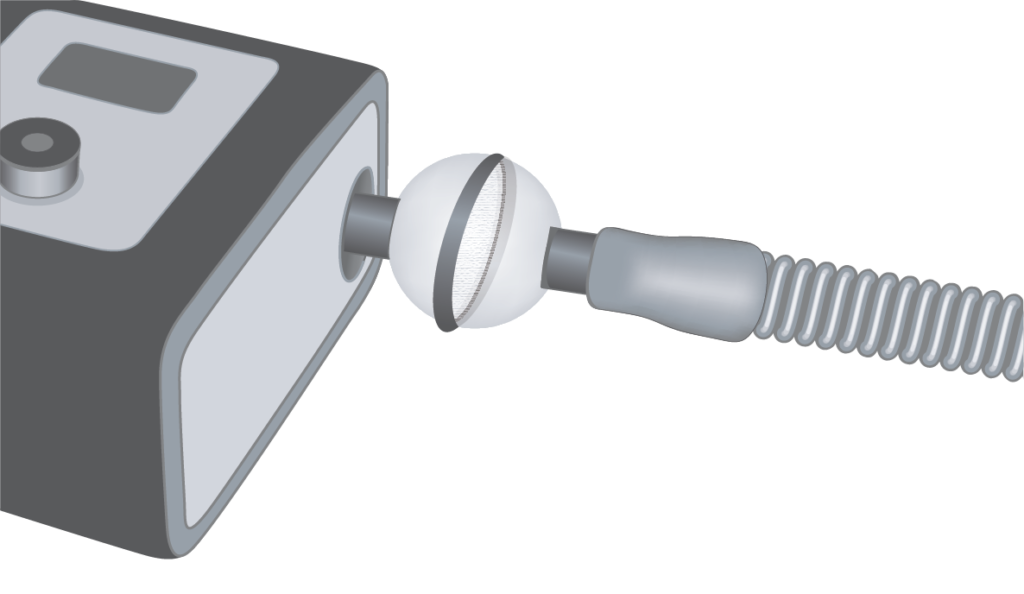Why Is It Important To Use Inline Bacterial/Viral Filters with CPAP Machines?
Many CPAP users only employ the standard filters that are integrated with their machines. A quick search online shows plenty of CPAP user forums where people contend that one only needs to use inline filters if they suffer from extreme allergies. But in the wake of COVID-19, air quality and supporting one’s immune system have become widespread considerations. As we will show, there are several compelling reasons for CPAP users to adopt inline filtration for their overall health.
Standard CPAP Filtration
Standard CPAP machine filters are essential—typically located at the intake of the machine, they filter the ambient air to capture larger particles that can compromise the machine. As such, they are for the machine’s protection as much as the user’s health.
Even “ultra-fine” CPAP filters do not have filtration efficiency ratings. That is because they do not capture tiny particles like viruses, bacteria and smaller allergens. If these particles are in the ambient air, they may be directed straight into the user’s lungs. These filters also need to be either washed or replaced regularly (if reusable or disposable). If not, they can harbor bacteria that will also be passed onto the user.
Inline Bacterial/Viral Filters
These filters typically connect between the air outlet of the machine and the air tube that goes to the user. While it is important for the user to check the CPAP manufacturer’s recommendations, most inline filters do not require air pressure calibration—it’s as simple as plugging it in and using as normal.
Unlike standard inlet CPAP filters, inline filters are typically rated to filter out 99.9+% of viruses and bacteria. So in addition to capturing dust, mites, mold and allergens that standard filters may miss, inline filters offer an additional layer of protection against exposure to airborne viruses and bacteria as well.
Why is Virus and Bacteria Filtration Important?
For one, if someone in the user’s household is a carrier of COVID-19, inline filtration could offer some protection against infection due to aerosols that carry the virus. The same goes for general colds and flus as we head from the fall into the winter.
Additionally, CPAP machines with heated humidifiers may pose a particular risk for bacteria exposure, particularly when not cleaned. A 2007 study found that in 9 of 11 tests, bacteria from the humidifier was passed onto the breathing tubes, which put users at risk for respiratory infections.[1] The researchers concluded by recommending the use of hydrophilic inline filters as protection against aerosolized bacteria from heated humidifiers.
How Does it Work?

Indoor Air Quality and Inline Bacterial/Viral Filtration
The quality of indoor air is vital for health. Poor indoor air can cause irritation of the nose and throat and lead to dizziness and headaches. It can also exacerbate asthma and other respiratory conditions.[2] The problem is that poor indoor air quality can have a variety of causes, and many of the solutions involve extensive cleaning,[3] which is something many people do not have time to keep up with as well as they would like to.
People spend about one third of their time indoors in the bedroom.[4] That means that with the use of inline bacterial/viral filters, CPAP users can immediately improve the quality of the air they breathe for a significant portion of their lives with very little effort or expense.
[1] https://www.ncbi.nlm.nih.gov/pmc/articles/PMC2556912/
[2]https://www.cpsc.gov/Safety-Education/Safety-Guides/Home/The-Inside-Story-A-Guide-to-Indoor-Air-Quality
[3] https://community.aafa.org/blog/why-healthy-indoor-air-quality-is-important
[4] https://community.aafa.org/blog/why-healthy-indoor-air-quality-is-important
